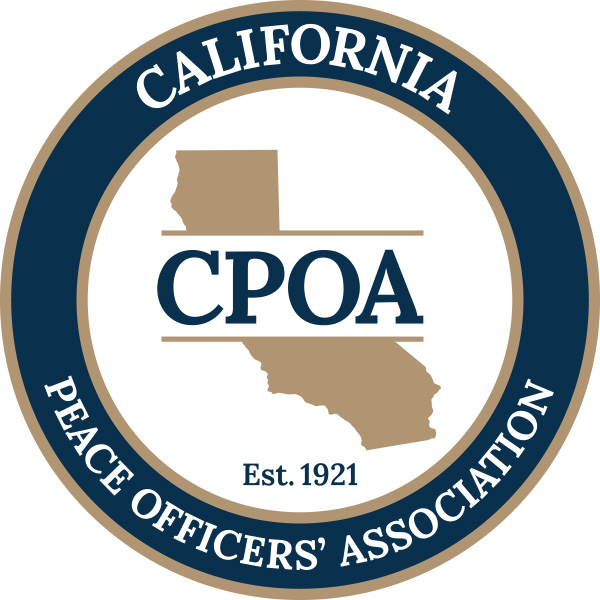Provided by James R. Touchstone Esq
In October 2021, the Ninth Circuit Court of Appeals in GEO Grp., Inc. v. Newsom,[1] reversed a District Court’s order denying the United States’ motion for a preliminary injunction against a California law that phases out private detention facilities within the state. The Court concluded that, because California Assembly Bill 32 (“AB 32”) conflicts with federal law and violates the intergovernmental-immunity doctrine, California intruded into the realm of the federal government’s exclusive powers to detain undocumented and other removable immigrants.
Background
The United States Immigration and Customs Enforcement (“ICE”) is a federal agency under the U.S. Department of Homeland Security (“DHS”) whose stated mission is to “protect America from the cross-border crime and illegal immigration that threaten national security and public safety.”[2] ICE does not build or operate any immigration detention facilities because of seasonal and other fluctuations in immigration. To avoid spending large sums of money on government-owned buildings that may remain vacant if immigration wanes, ICE relies exclusively on privately operated detention facilities, including some facilities in California. The federal government houses detainees in detention facilities until they are either removed from the country or released. The GEO Group, Inc., is a company that contracted with the federal government in 2019 to operate two private immigration detention centers in California.
In 2019, the then-Acting DHS Secretary told a congressional committee that the “influx at the border has especially strained ICE’s detention resources.” He reported that the number of new detainees had surged 79% in a single year.
Thereafter, California Governor Gavin Newsom signed AB 32 into law. AB 32 bans private detention facilities in California within this decade. The author of AB 32 explained that the bill provides “a general ban of for-profit, private detention facilities in California—including facilities used for immigration detention.” “We’ve all seen the current humanitarian crisis play out along the southern border.” “No human being deserves to be held in the horrific conditions we’ve been seeing in these for-profit, private facilities.” Sen. Judiciary Comm., Bill Analysis of A.B. 32, 2019-2020 Reg. Sess. (Cal. 2019).
Section 1 of AB 32 amends the Penal Code by adding Section 5003.1, which bans California Department of Corrections and Rehabilitation (“CDCR”) from entering or renewing a contract with a private, for-profit prison facility located “in or outside of the state.”[3] But the law provides an exception for California’s private prisons, permitting such contracts “in order to comply with the requirements of any court-ordered population cap.”[4]
Section 2 adds Penal Code sections 9500-9505. Section 9500 provides definitions:
(a) “Detention facility” means any facility in which persons are incarcerated or otherwise involuntarily confined for purposes of execution of a punitive sentence imposed by a court or detention pending a trial, hearing, or other judicial or administrative proceeding.
(b) “Private detention facility” means a detention facility that is operated by a private, non-governmental, for-profit entity, and operating pursuant to a contract or agreement with a governmental entity.
Penal Code section 9500 (emphasis added).
Section 9501 establishes the general rule that “a person shall not operate a private detention facility within the state.” Id. at section 9501. The remaining provisions specify exemptions to the general rule. Most of Section 9502’s exemptions apply only to certain facilities operating under California state law. Two of the exemptions are facially neutral, but one of them exempts school detention centers, which the federal government does not operate.
Section 9505 provides two final exemptions. First, a “private detention facility that is operating pursuant to a valid contract with a governmental entity that was in effect before January 1, 2020, for the duration of that contract, not to include any extensions made to or authorized by that contract.” Id. at section 9505(a). ICE entered into the contracts at issue before 2020, but all of ICE’s contracts include several extensions, which fall outside the exception outlined in Section 9505(a). Second, Section 9505 exempts a private detention facility renewed under Section 5003.1(e). As noted, Section 5003.1(e) provides an exception to comply with court-ordered population caps in state prison. As ICE relies exclusively on private detention centers in California, AB 32 would thus compel the United States to close down all ICE detention centers within the state. However, AB 32 carves out many exceptions for California’s various private detention centers.
Shortly after the passage of AB 32, the United States and GEO Group (“Appellants”) sued Governor Newsom and then-Attorney General Xavier Becerra (collectively, “California”), seeking a preliminary and permanent injunction against AB 32. They argued that AB 32 conflicted with federal law and violated the intergovernmental-immunity doctrine. California moved to dismiss GEO’s complaint and for a judgment on the pleadings for the federal government’s complaint. The District Court granted California’s motions, found that Appellants were unlikely to succeed on the merits, and denied the request for a preliminary injunction. The District Court held that the wellbeing of detainees falls within a state’s traditional police powers.
Discussion
The Ninth Circuit Court of Appeals noted that it reviews a denial of a preliminary injunction for abuse of discretion. However, “the [D]istrict [C]ourt’s interpretation of the underlying legal principles is subject to de novo review, and a [D]istrict [C]ourt abuses its discretion when it makes an error of law.”[5] The Ninth Circuit added that it reviews de novo a grant of a motion to dismiss for failure to state a claim as well as a motion for judgment on the pleadings.
The Court explained that “[a] plaintiff seeking a preliminary injunction must establish that he is likely to succeed on the merits, that he is likely to suffer irreparable harm in the absence of preliminary relief, that the balance of equities tips in his favor, and that an injunction is in the public interest.” Winter v. Nat. Res. Def. Council, Inc., 555 U.S. 7, 20 (2008). The Ninth Circuit stated that the “key question is whether GEO and the United States are likely to succeed on the merits.”
The Court of Appeals first determined as an initial matter that Appellants’ claims were justiciable. The Court noted that by the end of the decade, AB 32 will deprive the United States of the option to continue contracts with GEO and its other contractors. That result inevitably flows from the statutory language nullifying any contract renewals. The Court concluded that, based on the United States’ standing alone, it had authority to hear the case.
The Ninth Circuit then explained that the Supremacy Clause of the United States Constitution makes the laws of the United States “the supreme Law of the Land.” U.S. Const. art. VI, cl. 2. A state law cannot stand if “the challenged [state] law stands as an obstacle to the accomplishment and execution of the full purposes and objectives of Congress.” Hughes v. Talen Energy Mktg., LLC, 136 S. Ct. 1288, 1297 (2016) (internal quotation marks omitted) (quoting Crosby v. Nat’l Foreign Trade Council, 530 U.S. 363, 373 (2000)). “[T]he purpose of Congress is the ultimate touchstone in every pre-emption case.” Wyeth v. Levine, 555 U.S. 555, 565 (2009). (quoting Medtronic, Inc. v. Lohr, 518 U.S. 470, 485 (1996)) (internal quotations omitted). Under the presumption against preemption, courts should assume that federal law does not supersede the historic police powers of the states “unless that was the clear and manifest purpose of Congress.” Id. (quoting Medtronic, 518 U.S. at 485).
Applying the presumption against preemption, the District Court had found that AB 32 regulates the health and safety of people detained in California, and that health and safety were within a state’s traditional police powers. However, The Ninth Circuit concluded that the presumption against preemption did not apply to AB 32.
From AB 32’s statutory language as well as its context,[6] the Ninth Circuit concluded that California law regulated the federal government’s detention of undocumented and other removable immigrants. The Court observed that Sections 9500 and 9501 prohibit operating a detention facility “pursuant to a contract . . . with a governmental entity,” but the text did not limit “governmental entity” to only state or local governments – it also purposefully included the federal government, which detains thousands of people within California. The Court stated that AB 32’s intentional inclusion of the federal government contrasted with other Penal Code provisions that apply to the treatment of people held only in state prisons or county jails.[7] Thus, the Court found that the plain language of AB 32 targeted mainly the federal government and its detention policies, and that the District Court erred by defining the relevant regulated area too broadly.
The Ninth Circuit added that the context of AB 32 underscored that California did more than just exercise its traditional state police powers—it impeded the federal government’s immigration policy. The Court stated that unlike the state government, the federal government was not entitled to any exemptions from AB 32, and that California was not “shield[ed]…from federal preemption, especially given that the text and context of the statute make clear that state has placed federal immigration policy within its crosshairs.”
The Ninth Circuit found that the District Court erred in relying on language from United States v. California[8] to reason that California exercised its traditional state police powers. There, the Ninth Circuit had considered AB 103,[9] which, among other things, authorized the California Attorney General to collect information about the health and welfare of immigrant detainees in privately run facilities. The Court had noted in dicta that neither party “dispute[d] that California possesses the general authority to ensure the health and welfare of inmates and detainees in facilities within its borders.”[10] The Ninth Circuit explained here that California made clear that AB 103 did not intrude on federal powers because the “[m]ere collection of such factual data does not (and cannot) disturb any federal . . . detention decision.”[11] AB 103 did “not regulate whether or where an immigration detainee may be confined.”[12] The Ninth Circuit explained that, unlike AB 103, AB 32 does “disturb” the federal government’s “detention decision” because it “regulate[s] . . . where an immigration detainee may be confined” by banning the use of private detention facilities.
The Court also concluded that California had not historically regulated the conditions of detainees in federal custody, and specifically those housed in immigrant detention centers, because the federal government exclusively regulates immigration detention and removals. See United States v. Locke, 529 U.S. 89, 99 (2000) (holding that the presumption against preemption does not apply in areas with a “history of significant federal presence”).[13] The Ninth Circuit remarked that AB 32 did not just “touch”[14] upon the area of immigration detention; it “bulldozes over the federal government’s ability to detain immigrants by trying to ban all the current immigration detention facilities in California.”
Moreover, the Ninth Circuit explained that Congress unambiguously granted the DHS Secretary broad discretion over immigrant detention, including the right to contract with private companies to operate detention facilities. 8 U.S.C. section 1231(g) grants the Secretary “broad discretion in exercising his authority to choose the place of detention for deportable aliens.” Comm. of Cent. Am. Refugees v. INS, 795 F.2d 1434, 1440 (9th Cir.), amended, 807 F.2d 769 (9th Cir. 1986). The Secretary also has the power “to make contracts . . . as may be necessary and proper.” 6 U.S.C. section 112(b)(2). The Court noted that the federal government had relied on private immigration detention centers for decades and cited a government report that noted that by 1991, private companies operated half of all immigration detention facilities in the country. The Court also noted that “to this day, Congress continues to pass appropriation bills that specifically earmark money for ICE to contract with private detention facilities.” The Court rejected arguments by California and amicus curiae American Civil Liberties Union (“ACLU”) asserting the DHS Secretary was never granted or granted limited authority to contract with private parties. The Court declared instead that AB 32 conflicted with the Secretary’s statutory power to contract with private detention facilities. AB 32 thus could not stand because it conflicted with this federal power and discretion given to the Secretary in an area that remains in the exclusive realm of the federal government and barred the Secretary from doing what federal immigration law explicitly permits the Secretary to do.
The Ninth Circuit also held that AB 32 discriminated against the federal government in violation of the intergovernmental-immunity doctrine. “Under the Supremacy Clause, ‘the activities of the Federal Government are free from regulation by any state.’”[15] Under the intergovernmental-immunity doctrine, a state may not “regulate[] the United States directly or discriminate[] against the Federal Government or those with whom it deals.”[16] The Court explained that a state violates the discriminatory aspect of intergovernmental immunity when it treats the state more favorably than the federal government without justification. Discrimination exists where the net effects of a state law discriminate against the federal government. The Court held that under this net effect analysis, AB 32 discriminated against the federal government because AB 32 required the federal government to close all its detention facilities, including its ICE facilities, and does not require California to close any of its private detention facilities until 2028.
The Ninth Circuit therefore held that the United States and GEO were likely to prevail on the merits of their motion for a preliminary injunction. The Court held further that the remaining injunction factors also tipped in Appellants’ favor. The Court explained that because constitutional injuries constitute irreparable harm, and AB 32 facially discriminated against the federal government, the United States suffered an irreparable harm. Moreover, by establishing a likelihood that AB 32 violated the U.S. Constitution, the Court concluded that Appellants established that both the public interest and the balance of equities favored a preliminary injunction.
The Ninth Circuit Court of Appeals accordingly reversed the District Court’s orders denying the motion of the United States and GEO Group for a preliminary injunction and granting the State of California’s motions to dismiss and for judgment on the pleadings. The Court remanded the case for further proceedings.
HOW THIS AFFECTS YOUR AGENCY
The Ninth Circuit expressed no opinion on the value of AB 32’s ban on private detention centers or the policy implications of so-called “for-profit prisons.” However, the Court stated that California cannot intrude into the realm of the federal government’s exclusive powers to detain undocumented and other removable immigrants if the state law conflicts with federal law and violates the intergovernmental-immunity doctrine. The Court concluded that AB 32 did so. It remains to be seen whether the State of California attempts to modify laws such that private detention facilities that contract with the State are affected in the same manner as those facilities that contract with the federal government. Agencies are advised to consult with a trusted legal advisor on issues involving the complex area of state and federal powers, particularly with regards to immigration, if your jurisdiction is affected by AB 32’s provisions.
As always, if you want to discuss any of this in greater detail, do not hesitate to contact James Touchstone at jrt@jones-mayer.com or by telephone at (714) 446-1400.
Information on www.jones-mayer.com is for general use and is not legal advice. The mailing of this Client Alert Memorandum is not intended to create, and receipt of it does not constitute, an attorney-client-relationship.
[1] 2021 U.S. App. LEXIS 29898 (9th Cir. Oct. 5, 2021).
[2] See https://www.dhs.gov/topic/immigration-and-customs-enforcement.
[3] Penal Code section 5003.1(a)-(b).
[4] Id. section 5003.1(e).
[5] E. & J. Gallo Winery v. Andina Licores S.A., 446 F.3d 984, 989 (9th Cir. 2006) (quotation marks and alterations omitted).
[6] The Ninth Circuit wrote: “To determine the regulated activity, we first look at ‘the language of the statute itself,’ which ‘must ordinarily be regarded as conclusive.’ City of Auburn v. U.S. Gov’t, 154 F.3d 1025, 1029-30 (9th Cir. 1998). The context of the state’s regulation matters, too. A state cannot automatically trigger the presumption [against preemption] by merely asserting some generic police power divorced from the context of the challenged regulation. See Buckman Co. v. Plaintiffs’ Legal Comm., 531 U.S. 341, 347[] (2001) (holding that a state’s general police power over fraud did not trigger the presumption because states had not ‘traditionally occupied’ the field of ‘[p]olicing fraud against federal agencies’ (emphasis added)); see also United States v. Alabama, 691 F.3d 1269, 1296 (11th Cir. 2012).”
[7] See, e.g., Penal Code section 2650 (stating that the “Mistreatment of Prisoners” provisions apply only to someone “sentenced to imprisonment in the state prison” and, in some cases, county jail); Penal Code sections 4000-4032 (setting standards for treatment of people in the “common jails in the several counties of this State”).
[8] 921 F.3d 865 (9th Cir. 2019).
[9] See Client Alert Vol. 34, No. 18 for more on the Ninth Circuit’s AB 103 discussion in United States v. California.
[10] United States v. California, 921 F.3d at p. 886.
[11] Id. at 885 (emphasis added by the Court).
[12] Id. at 885.
[13] See also Arizona v. United States, 567 U.S. 387, 409 (2012); and Jama v. Immigr. & Customs Enf’t, 543 U.S. 335, 348 (2005).
[14] The Court distinguished the instant case from Puente Arizona v. Arpaio, 821 F.3d 1098 (9th Cir. 2016) [involving an identity fraud state law that “touched” upon immigration] and Knox v. Brnovich, 907 F.3d 1167, 1177 (9th Cir. 2018) [addressing whether a state law limiting who can collect early election ballots “touched” upon the federal “field of letter carriage and delivery”].
[15] Boeing Co. v. Movassaghi, 768 F.3d 832, 839 (9th Cir. 2014) (quoting Mayo v. United States, 319 U.S. 441, 445 (1943)).
[16] Id. (quoting North Dakota v. United States, 495 U.S. 423, 436, 110 S. Ct. 1986, 109 L. Ed. 2d 420 (1990) (plurality opinion) (Stevens, J.)) (alteration in original).


